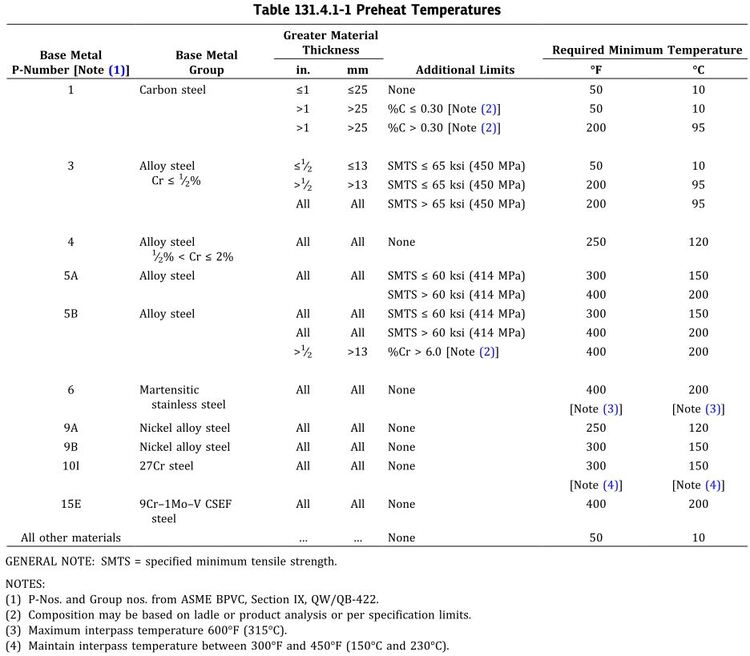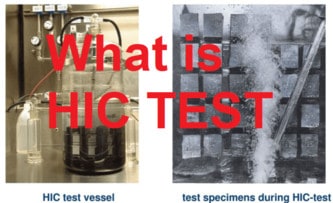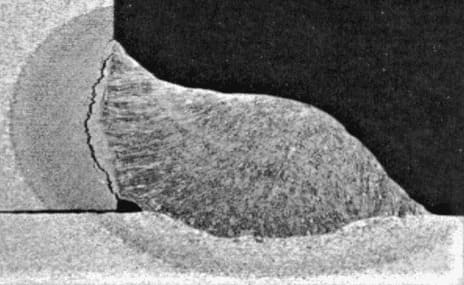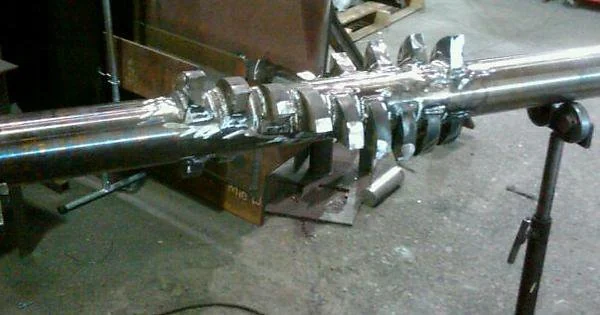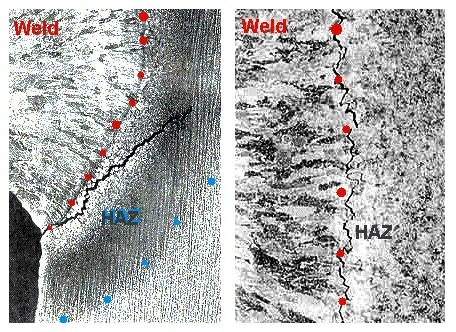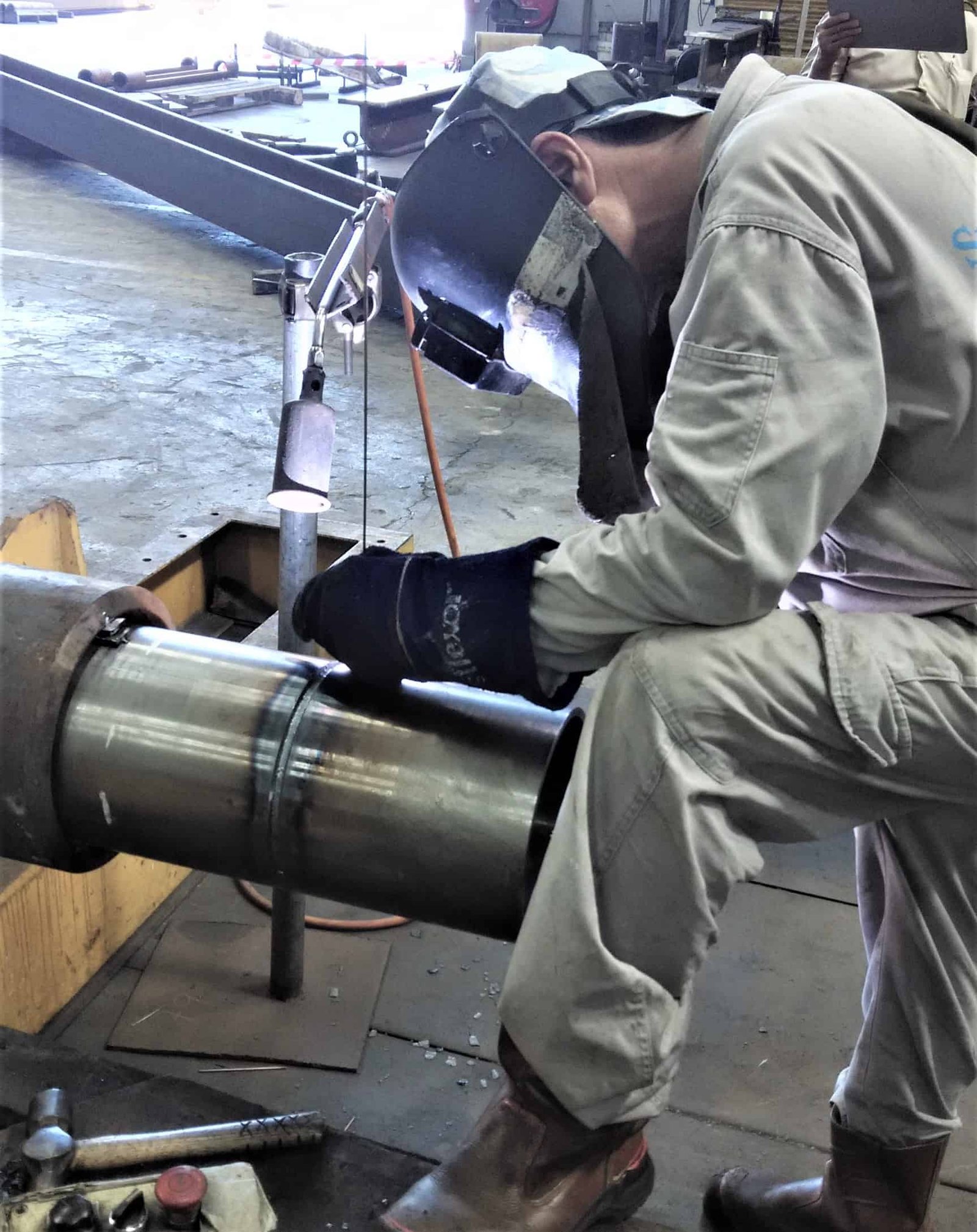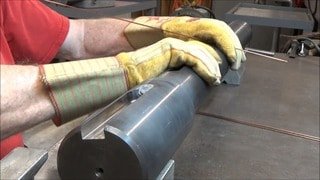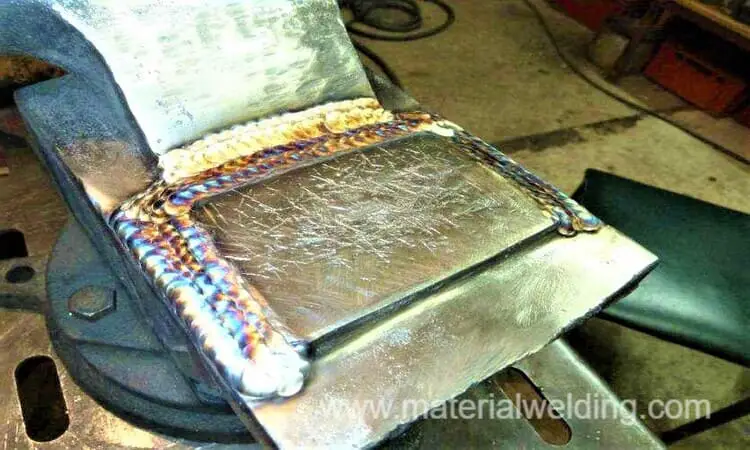What is Preheating in Welding?
Preheating in Welding involves heating the base metal surrounding the weld joint, to a specific pre-determined minimum temperature, called the preheat temperature, prior to welding or performing tack welds.
Preheating application can be either just before the welding or continuous preheat maintenance till the welding is completed.
Preheating before welding is done to avoid:
- Hydrogen Cracking (Cold Cracking/ Delayed Cracking).
- Reduce residual stresses and distortion control.
- Reduce propensity of hard microstructure formation.
- Eliminate stress-oriented weld cracking & minimize welding porosity.
The first case applies to non-alloyed thick carbon steel material but usually a preheat maintenance i.e., preheating throughout the welding is required for more exotic materials such as Cr-Mo steels, HSLA steels, hardened steel and Q &T Steels, etc.
Understanding Interpass Temperature in Welding: What Is It?
Interpass temperature means the actual temperature of the welding job in the welding zone just immediately before the start of the welding the next run. Interpass temperature is not applicable for root run as it’s the initial or first run in a welding joint. But for subsequent weld passes, interpass temperature will be applicable.
Also, Interpass temperature is not applicable in the case of single-pass welds and hence interpass temperature is considered only for multi-pass welds.
Uncovering Preheat Maintenance Temperature in Welding
Preheat Maintenance Temperature means the minimum specified pre-determined temperature in the welding area that shall be maintained in case the welding is interrupted. So, before the welding re-start, preheat temperature shall be reapplied and maintained.
Interpass Temperature versus Preheat Temperature: A Comparative Analysis
The main difference between the preheat and interpass temperature is the limit of temperature placed on it. Preheat temperature if applied is the minimum temperature while the interpass temperature is the maximum temperature.
Preheat is applied before the start of the welding and can be continuous throughout the welding while the interpass temperature is applicable after depositing the weld and to be controlled before welding the next weld pass. Interpass temperature is not applicable in the case of single-pass welds and hence it is considered only for multi-pass welds.
Interpass temperature is as important as preheating in relation to the mechanical and microstructural properties of the weld. For example, the yield strength and maximum tensile strength of a welded metal both affect the Interpass temperature. High Interpass temperatures tend to reduce the strength of the welded metal.
Additionally, higher Interpass temperatures typically create fine grain and improve Charpy V notch toughness transition temperatures.
Exploring the Welding Preheat Zone: Everything You Need to Know
Welding preheat zone refers to the area adjacent to & surrounding the point of welding. The welding preheat zone should be at or above the minimum given preheat temperature in all directions. The same preheat zone is applicable for tack welding as well.
How do you measure the preheat & Interpass temperature on a welder?
The measurement of preheat (or preheat temperature measurement method) shall be done using either a temperature gun (infrared or laser type) or with temperature crayons or thermocouple for compliance to the qualified WPS. Measurement of preheat temperature shall be made on the welding job that is facing the welder side.
Preheat temperature shall be applied at least 50 millimeters (2 inches) on both sides of the welding joint (these preheat requirements are as per ISO 13916).
As per the AWS D1.1-Structural welding code for steel, the preheat shall be applied at least equal to the base metal thickness or 3 inches (75 millimeters) whichever is lower & it shall be applied in the all direction from the welding point.
As per ASME B31.3, the preheat temperature shall be applied at a distance of the larger of 75 mm (3 in.) or 1.5 times the greater nominal thickness. Measurement of interpass temperature shall be made on the weld metal or close to weld metal on the base material.
Watch our YouTube video for interactive animation learning on Welding Preheat.
What are the benefits of Preheat in Welding?
Preheat in welding has many favorable benefits to improve the weld integrity and reliability. The main advantages of welding preheat are:
- Preheat reduce the weld cooling rate, which in turn promotes a ductile weld metal to resist weld cracking.
- Slow cooling rate offered by welding preheat allow time to diffuse the hydrogen from the weldment. Thus prevent hydrogen cracking on delayed cracking issues.
- Preheat help to minimize thermal shocks during welding by proving favorable conditions thus minimize the welding shrinkage and residual stresses.
- Preheat help to create good fusion in material with high thermal conductivity such as when welding thick aluminum or copper alloys.
When Should Preheat be Used & What is the criteria for preheating??
The welding preheat requirements depend on the following factors:
- The thickness of the base metal- Higher thickness, higher preheat temperature
- Base metal chemical composition & CE value– Higher CE, Value, higher preheat.
- Mandatory Code/ standards requirements,
- Presence of hard microstructure in the base metal or weld metal.
- Type of welding electrodes & level of hydrogen in the welding rod.
- Base material type- Low alloy requires preheat, but no preheat is required for austenitic stainless steel.
What temperature do you preheat steel before welding?
In case when there is no code/ or standard reference is available, the preheat temperature determination can be carried out using our Online Preheat Calculator. Apart from that, preheat should be applied for thicker carbon steel material (usually more than 1.25inches ( or 32 millimeters).
Other conditions such as the amount of hydrogen in welding, material thickness, level of restraint, and surrounding temperature shall be considered when deciding welding preheat temperature.
Various preheat charts are provided in different codes and standards such as ASME B31.3, AWS D1.1 & ASME Section VIII, etc. Below welding preheat temperature chart from ASME B31.3 can be applied to various materials.
The Welding Preheat Temperature Chart - an indispensable tool for understanding temperature variations and achieving optimal welding outcomes.
Welding Preheat Temperature chart for carbon steel, alloy steel, martensitic stainless steels, Nickel alloys and other material is given below for reference taken from ASME B31.3.
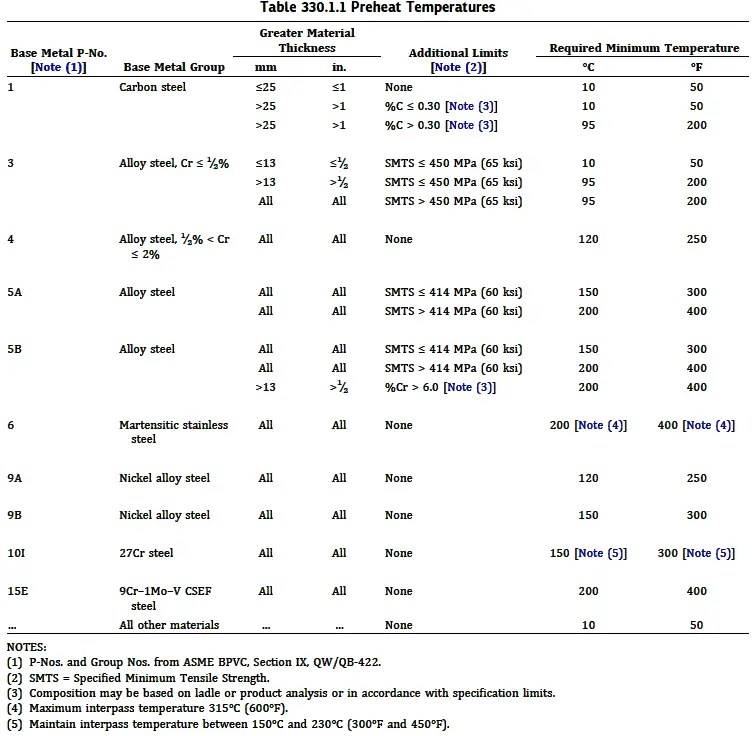
How to select Preheat temperature for Welding:
The selection of a correct preheat temperature for welding is a critical task and requires sound knowledge of codes, standards, metallurgy and engineering practice. Briefly, preheat temperature can be selected by:
- Based on construction code and welding recommendation codes or standards.
- Based on alloy chemistry, thickness, level or restraint & hydrogen level.
Preheat temperature for Welding requirements according to various codes and standards:
The table below specifies the various code references for the preheat temperature.
This guide helps to easily locate the applicable code preheat requirements such as ASME Section VIII, ASME B31.1, ASME B31.3, AWS D1.1 & EN 1011-2 latest respective edition.
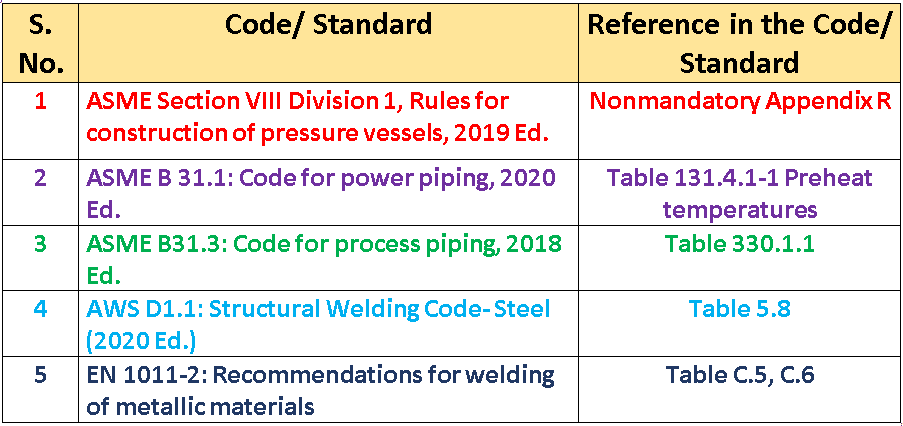
Preheat temperature calculation based on alloy chemistry, thickness, restraint & hydrogen level:
When no welding codes are specified, and the need for preheat has been established, how does one determine an appropriate preheat temperature?
The preheating temperature for welding is based on the:
- Carbon Equivalent of the material. Click here for online Carbon Equivalent Calculator.
- Material thickness- Higher thickness, higher preheat temperature.
- Hydrogen content in the weld- Higher hydrogen in weld, higher preheat temperature.
- Thermal conductivity of the material- Higher preheat temperature requires for conductive material welding.
You can use our Preheat Calculator to easily find the preheat temperature based on alloy chemistry, thickness & hydrogen level.
Preheat & Interpass Temperature Measurement and Control Method
One way to control the Interpass temperature is to use crayons that represent both temperatures.
The crayons (also known as Tempilstik) painted on the material being welded melt when the crayon’s melting temperature is reached. Crayons are available at a variety of melting points, and each crayon is labeled with an approximate melting point.
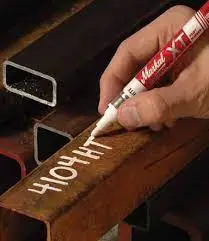
The first temperature indicator crayon is usually used to measure the specified minimum preheat temperature and the minimum specified Interpass temperature, while the second is a hot crayon (if necessary) that is used to measure the specified maximum interlayer temperature.
The welder first heats the joint to weld and paints the base material with a crayon at the first temperature (to check the preheating) to verify the temperature of the base material at the location required by the cord.
When the specified minimum preheating temperature is reached (when the first crayon mark melts), the first welding pass can be started. Immediately before the second and subsequent pass operations, you must check the temperature between the minimum and maximum (if specified) passes in the appropriate location.
